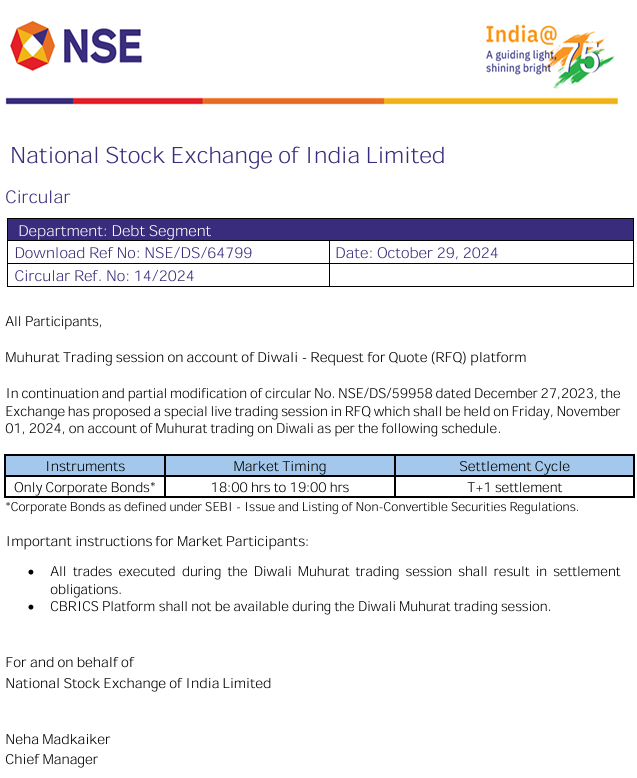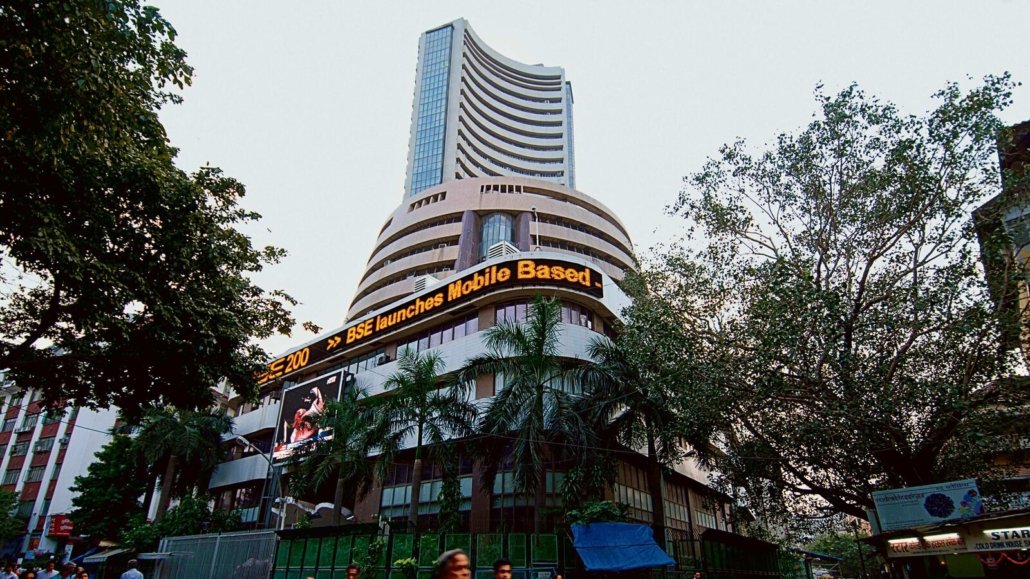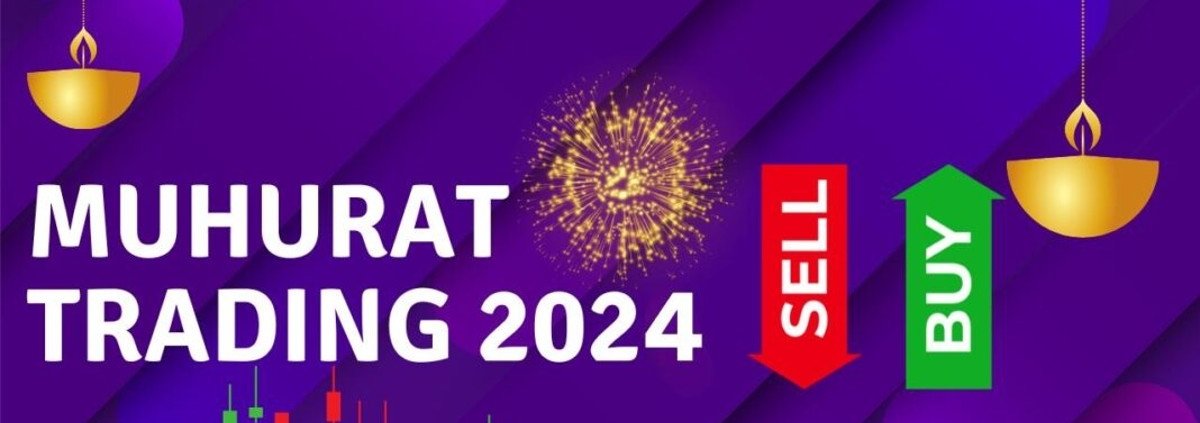The annual Muhurat Trading session, scheduled to coincide with Diwali, will take place today, November 1, 2024, from 6:00 PM to 7:00 PM IST on both the Bombay Stock Exchange (BSE) and National Stock Exchange (NSE). A unique feature of the Indian stock market, Muhurat trading is an auspicious hour for trading and is observed as a symbolic start to the Hindu New Year in line with the Samvat calendar, where Samvat 2081 begins this year.
This session allows investors to make a fresh beginning, invoking prosperity and wealth as they place their trades. Muhurat trading is not just a financial event but also a cultural tradition embedded in investor sentiment across India. Here are key aspects, historical patterns, and insights into Muhurat Trading:

1. Significance of Muhurat Trading
- Cultural and Financial Importance: For decades, the special trading hour on Diwali has held sentimental and financial importance. It represents a time when traders, portfolio managers, and retail investors alike wish for wealth and success in the coming year.
- Astrological Belief: Many believe the Muhurat trading hour is a time of planetary alignment favoring new beginnings. Traditionally, the practice follows the belief that any activity started on this auspicious hour is blessed with prosperity.
2. Scheduled Timings for 2024
- Trading Session: 6:00 PM – 7:00 PM IST
- Pre-Open Session: Approximately 5:45 PM – 6:00 PM IST
- Trade Modification Window: Until 7:10 PM IST (a short period for final adjustments before the session closes)

3. Historical Performance of Muhurat Trading
- Over the past 17 years, the BSE Sensex has ended positively on 13 occasions, showing the optimism and positive sentiment that typically surrounds the event.
- Largest Gain in a Single Session: In 2008, amidst global financial turmoil, the Sensex recorded a 5.86% jump, closing at 9,008, marking the highest one-day Muhurat trading gain in its history.
- Moderate Returns with Low Volatility: The index usually records moderate returns during the session, as market sentiment is buoyant, though trading volumes are generally low compared to regular trading days.
4. Trading Volume and Stock Movement Patterns
- Low Volumes: Muhurat trading sees significantly lower trading volumes than regular sessions, as only selected stocks witness notable movements.
- Selective Stock Movements: Blue-chip stocks, particularly from large-cap sectors, often experience more attention than mid-cap or small-cap stocks, although retail investors sometimes buy small quantities for sentimental reasons.
- Sector-wise Focus: Traditionally, sectors like banking, consumer goods, and automobiles see more activity, aligning with Diwali’s symbolism of abundance and wealth.
5. Common Investor Strategies During Muhurat Trading
- New Beginnings: Investors often purchase new stocks or increase positions in existing holdings as a symbolic start to the new Samvat year.
- Portfolio Restructuring: Some use this time for a brief portfolio review, making symbolic adjustments that reflect optimism for the new financial year.
- Long-Term Focus: Unlike the high-frequency trading seen on other days, investors tend to hold positions taken during Muhurat trading longer, based on the cultural significance of the event.

6. Expectations for Muhurat Trading 2024
- Market Sentiment: With the Sensex and Nifty hovering at historically high levels this year, investors and analysts anticipate a positive close, albeit with limited upward movement.
- Market Dynamics: Economic indicators, global cues, and sector-specific news will influence stock performance. However, the cultural and symbolic nature of Muhurat trading often steers focus toward established and blue-chip stocks.
- Optimism Among Investors: This year’s Muhurat trading session is expected to follow the trend of cautious optimism, with a focus on sectors that have demonstrated resilience, such as banking, information technology, and consumer goods.
7. Symbolic Value and Broader Implications
- Significance for Retail Investors: Retail investors often see Muhurat trading as an ideal time to make a small investment, hoping it will grow throughout the year.
- Involvement of Institutional Investors: While retail participation is high, institutions also participate symbolically, marking a shared cultural acknowledgment of the occasion.
Key Takeaways:
- Muhurat trading is as much a cultural event as it is a financial one. It reinforces the link between financial markets and traditional beliefs.
- Historically, the Sensex and Nifty have shown positive returns, though with lower volumes, underscoring the session’s symbolic importance.
- Investors generally adopt a conservative approach, favoring select large-cap stocks that align with the optimistic outlook associated with the new Samvat year.
Overall, Muhurat trading in 2024 presents an opportunity for a hopeful start in the markets, reflecting both investor sentiment and cultural tradition on the auspicious occasion of Deepavali.




Trackbacks & Pingbacks
[…] Click here t o read more 03/11/2024/0 Comments/by […]
Leave a Reply
Want to join the discussion?Feel free to contribute!